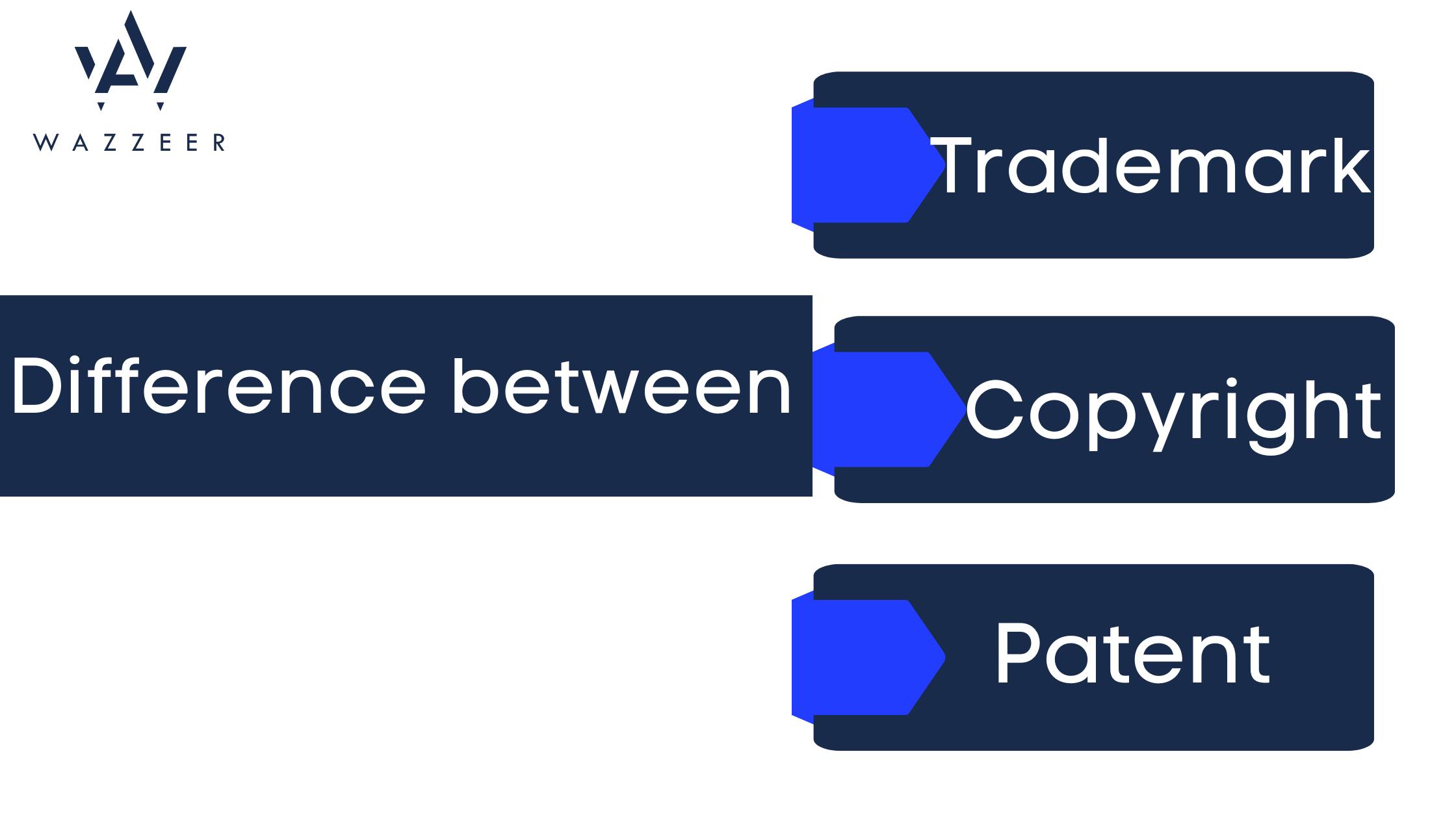In the dynamic world of business, protecting your intellectual property is crucial for safeguarding your innovative ideas and creations. Trademark, copyright, and patent are three distinct forms of intellectual property protection, each serving a unique purpose. Understanding the differences between them is vital for entrepreneurs and businesses alike. In this blog, we will delve into the differences between trademarks, copyrights, and patents. Which will then help you make informed decisions regarding your intellectual assets.
Trademark:
A trademark primarily protects symbols, names, logos, and slogans that distinguish goods and services in the market. It is a visual representation that identifies the source of the product and helps consumers differentiate between various offerings. Trademarks play a pivotal role in brand building, allowing businesses to establish a unique identity in the competitive landscape.
The key features of trademarks include their distinctiveness. The fact that they must be used in commerce to maintain protection. Registration with the Indian Trademark Office, grants exclusive rights to use the mark in connection with the specified goods or services.
Copyright:
Copyright is a form of protection grounded in the Constitution. Which grants exclusive rights to authors and creators for their original works of authorship. This protection extends to literary, artistic, and musical works, as well as software and other creative endeavors. Unlike trademarks, copyright protection is automatic upon the creation of the work and does not require formal registration.
Copyright provides creators with the exclusive rights to reproduce, distribute, perform, and display their works. The duration of copyright protection varies depending on the nature of the work, but it generally lasts for the life of the author plus an additional 70 years.
Patent:
Patents are exclusive rights granted to inventors for new, useful, and non-obvious inventions or discoveries. This form of intellectual property protection encourages innovation by providing inventors with a limited monopoly over their inventions. Patents are categorized into three main types: utility patents, design patents, and plant patents.
Utility patents cover new and useful processes, machines, or compositions of matter. Design patents protect the ornamental design of an article of manufacture. The plant patents are granted for new varieties of plants that have been asexually reproduced. Unlike trademarks and copyrights, obtaining a patent involves a rigorous application process with patent offices, such as the Indian Patent Office.
In summary, trademarks, copyrights, and patents serve distinct purposes in protecting intellectual property. Trademarks safeguard brand identities, copyrights protect creative works, and patents encourage innovation by granting exclusive rights to inventors. Understanding the differences between these is essential for businesses. As it safeguards their intellectual assets and navigate the complex landscape of intellectual property law.
At Wazzeer, we recognize the importance of intellectual property protection. Whether you need assistance with trademark registration, copyright issues, or patent applications, our expert team is here to guide you. Through the intricacies of intellectual property law, ensuring that your innovative ideas are secure. So, that your business can thrive in a competitive environment.
